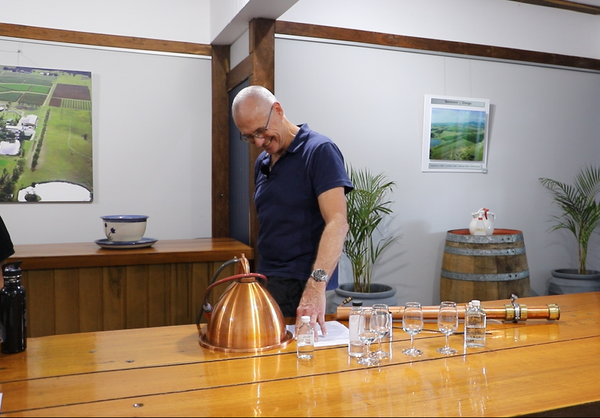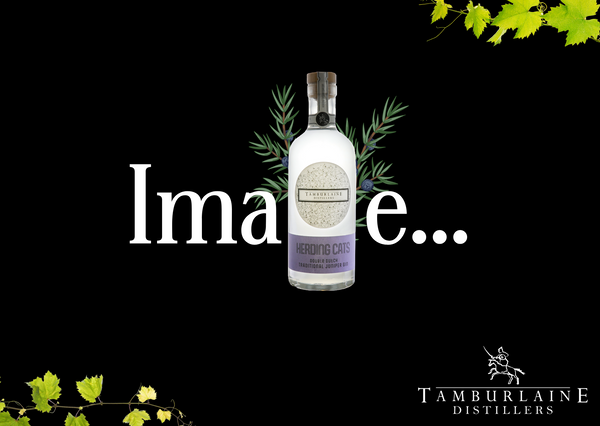Out of the Ashes... A Wine to Gin Story
Gin is a fun, popular spirit with a long tradition. We like it. You may know of its use in a variety of popular cocktails such as the martini, gin & tonic, gimlet, negroni, gin & juice, just to name a few. It’s a versatile little drink with a punchy, herbaceous taste that is hard to forget, and a history that spans half a millenium.
We didn’t plan to be distillers – rather, it began as an effort to adapt and improvise during the harsh and ever-changing climate events that occur around our vineyards while minimising waste wherever possible.
Vintage 2020 was a difficult time for many, as bushfires swept their way across our already sunburnt nation. What this meant for us was that smokiness of varying degrees presented in some of our wines. After successfully extracting spirits from our wine free of any smoke taints, our gin journey started. Organically certified botanicals were sourced and ‘garage trials’ paved the way to blends we love and have released to the public.
We are one of the rare companies making our own neutral spirit, and one of less than half a dozen known true grape to bottle gin producers in Australia (most gins are made with spirits derived from grains and purchased externally).
Ask to try our gins on your next visit to our Pokolbin or Millthorpe Cellar Doors or check out the range online below.
Scroll on for more gin facts…
History
Originating from “Genever” meaning Juniper in The Netherlands, gin spirits were made by distilling malt wine (i.e. a beer) and contained approximately 50% alcohol, with juniper berries added to mask the unpleasant taste. At that time, doctors were prescribing it for curing kidney problems and gallstones. When the drink reached England it was Anglicised to “gin” and for several decades it became a cheap and accessible household drink - eventually the government put a tax on it to discourage overconsumption. This caused pop-up black market gin stalls to come about, as well as experimental home brews, leading to a lot of dangerous and unconventional ingredients being added to these experimental brews to save money on botanicals. Some were even drinking gin as a substitute for water due to its wide availability, affordability and reputation as a relatively “sterile” drink during a time when contagious diseases were rife and there was little access to clean water, especially for the lower classes.
A similar pattern of events also happened when gin reached the US before the prohibition hit 1919 followed by several wars and shifting focuses and priorities among spirit producers their main customer bases. After the martini, there was a gap in the timeline where no new gin cocktails were invented and beyond WWII vodka beat out gin in terms of popularity with the US market. Despite its rocky history, gin has remained in the hearts of drinkers and passionate distillers alike, with production in over 30 countries, as well as taking 9th place in terms of most consumed alcoholic beverages worldwide (with wine, our first love, being 2nd!).
Juniper Berries
The earliest recorded mention of juniper plants was in Egypt, some 4000 years ago. Since that time, it is known that leaves and fruits of the juniper tree have been used for detoxing, wound dressing, internal medicine, scent masking during hunting and superstitious rituals all over the world. Tree roots have also been eaten in times of poverty and branches have been used for construction, wood carving and for burning to produce heat and light.
Aromatics
Other than juniper, gin can come infused with many other botanicals and additives as well. Flavouring gin can be done through steeping (any and all kinds of) botanicals and redistilling, or through alcoholic vapour infusion to make clear gins. Infusing directly in spirits works but gives a coloured and sometimes bitter result. We keep our alcohol content at 45% for a balance that is not too “hot” or “spirited” yet not too diluted in flavour.

The information in this article was partially brought to you by Tim, our Head Distiller, with some extra references from “The Curious Bartender’s Guide to Gin” by Tristan Stephenson, an insightful and fascinating book - check it out if you ever get the chance!









